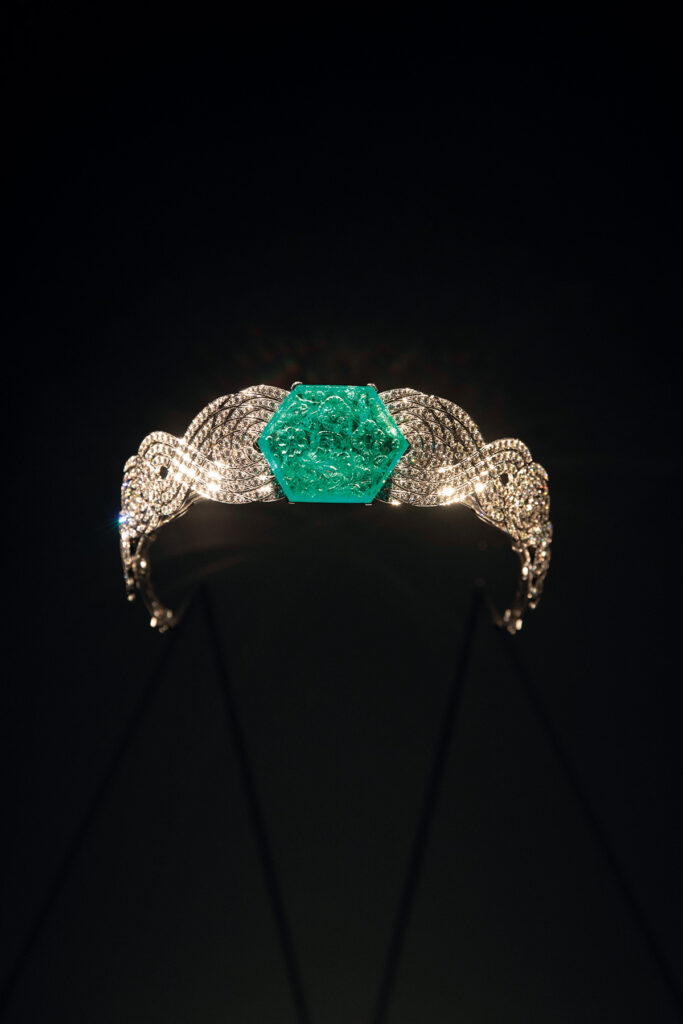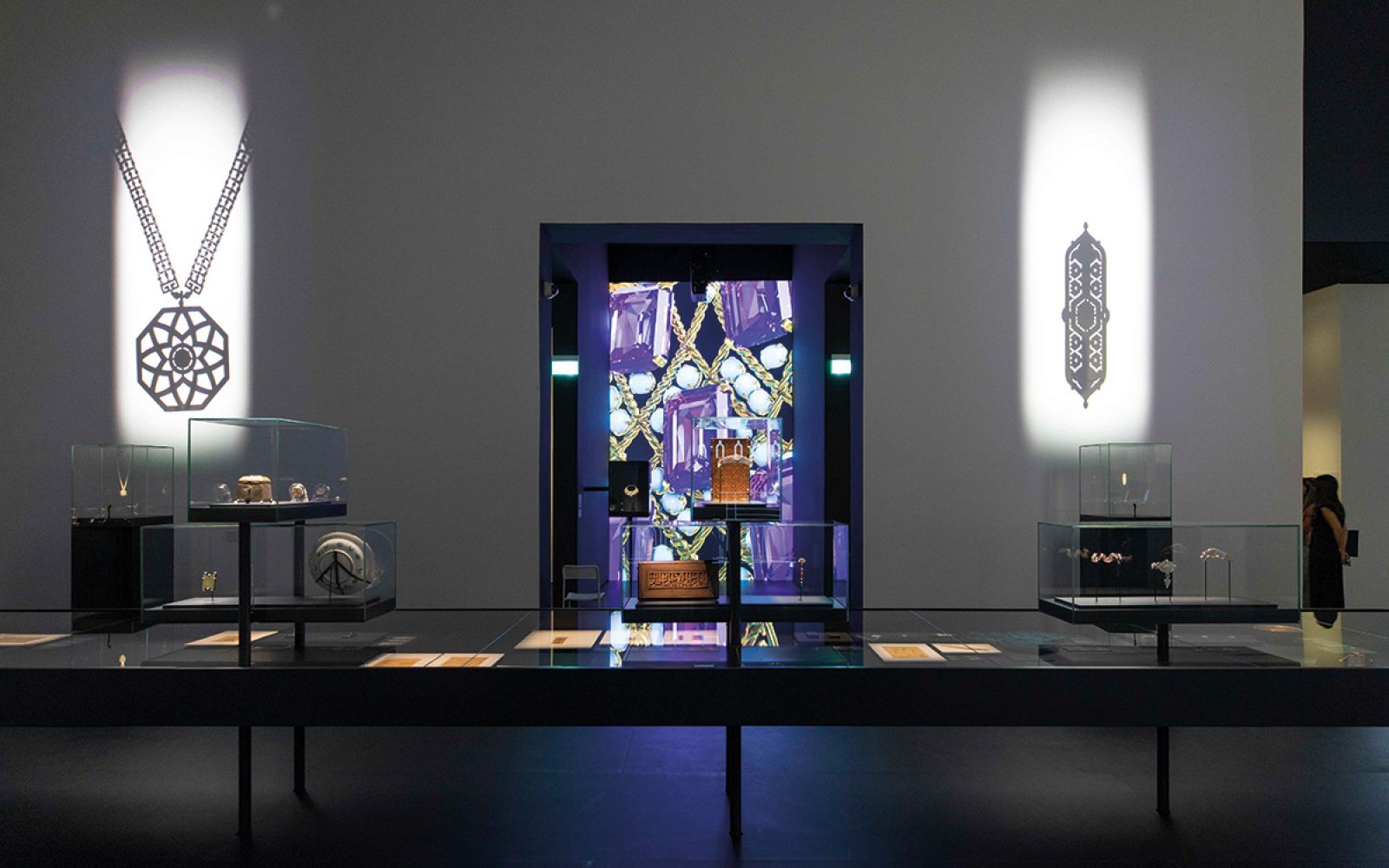With more than 400 objects on display dating from the 14th century to today, Cartier’s latest exhibition is a love letter to Islamic art
It might surprise you to know that Islamic art has been an important influence on the House of Cartier over the years, and that’s the premise behind a major new exhibition on show at the Louvre Abu Dhabi. Opened by His Excellency Mohamed Khalifa Al Mubarak, chairman of Louvre Abu Dhabi, Cartier, Islamic Inspiration and Modern Design examines the impact Islamic art has had on the fine jewellery label from the turn of the 20th century to the present.
Building on a project titled Cartier and Islamic Art: In Search of Modernity, which showed in Paris before moving on to Dallas, fans can expect something new from the Abu Dhabi stop, which showcases more than 400 objects including fine examples of Islamic art, drawings, design sketches, textiles and jewellery drawn from the permanent collections of Louvre Abu Dhabi, Musée des Arts Décoratifs, Musée du Louvre and the Cartier collection and archives in France, as well as loans from Le Petit Palais — Musée des Beaux-Arts de la Ville de Paris and private collections. “While we have shown the exhibition in Paris and Dallas, we always have a different scenography, so there’s no copy and pasting,” Arnaud Carrez, Cartier’s senior vice president and chief marketing officer, tells MOJEH. “There will be similar pieces, but there will always be some adjustments, and the décoris always different from one exhibition to the next.”

Hundreds of Cartier objects are being showcased, including jewellery, design sketches and textiles
The exhibition starts at the turn of the 20th century, which saw a significant dedication to Islamic art and the massive arrival of Persian and Indian paintings and manuscripts, which led to the development of a true Persian fashion in Paris. A huge source of inspiration for Louis Cartier, grandson of the founder of the Maison, he even initiated a personal collection of Islamic art which he then made available to his designers. Highlights include a wooden carved ivory panel with scrolls (1334–1339, Cairo, Egypt), a dish with a blue saz leaf, dotted tulips and roses (ca. 1580, Iznik, Turkey), a vanity case with decoration inspired by Iznik ceramics (Cartier Paris, 1927), a Hindu necklace (Cartier Paris, 1936) and a tiara (Cartier London, 1937). Le Petit Palais — Musée des Beaux-arts de la Ville de Paris has also lent an exceptional collection of design sketches by Charles Jacqueau, a pivotal designer to Maison Cartier.
Elsewhere expect two infinity rooms which will immerse visitors in animated patterns, offering a captivating 180-degree visual experience within this digital realm, as well as the Louvre’s usual run of talks, documentary screenings and more.“We chose the Louvre Abu Dhabi because since the beginning our intention has always been to find places that can echo the collections in terms of style and architecture,” adds Carrez. “That’s exactly what the Louvre does.” Cartier, Islamic Inspiration and Modern Design will be running at Louvre Abu Dhabi until 24 March. Book tickets
Read Next: The Jewellery Trends You Need to Know For 2024
- Words by Naomi Chadderton





